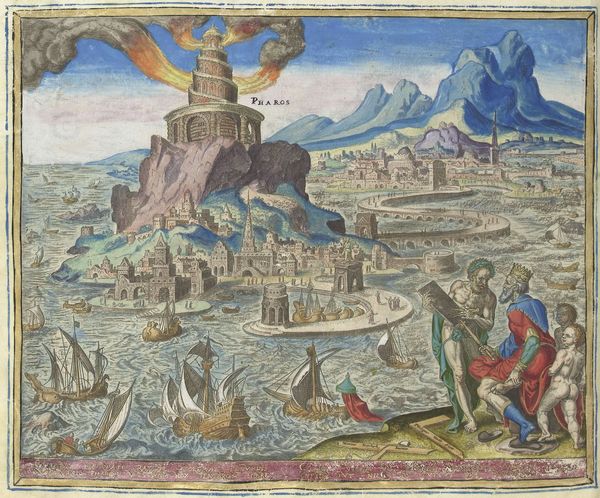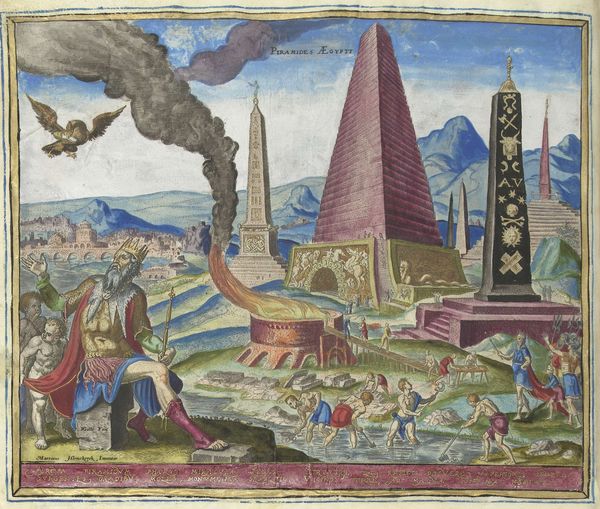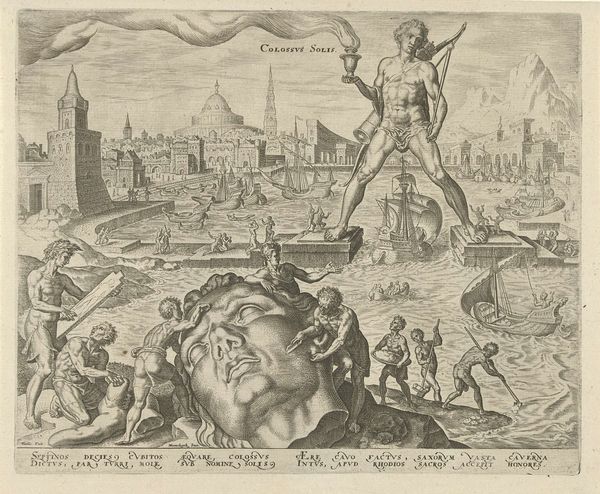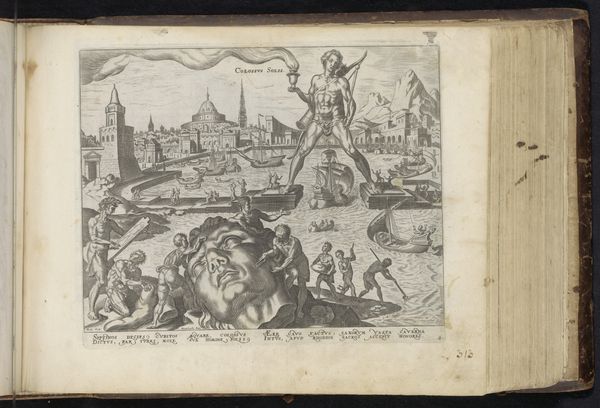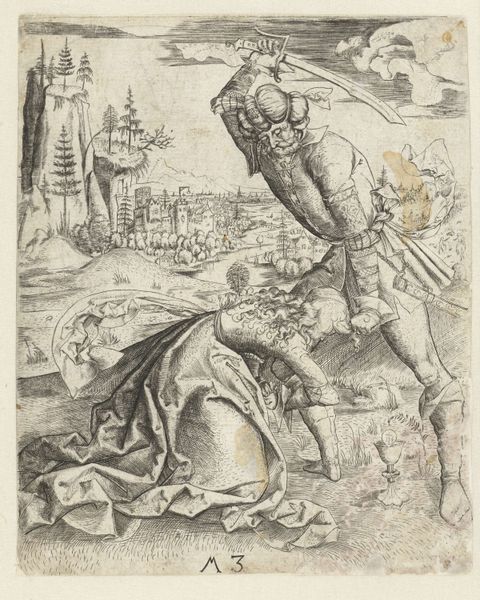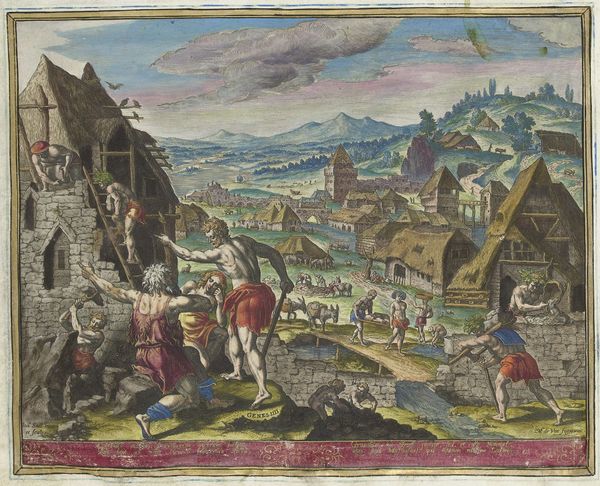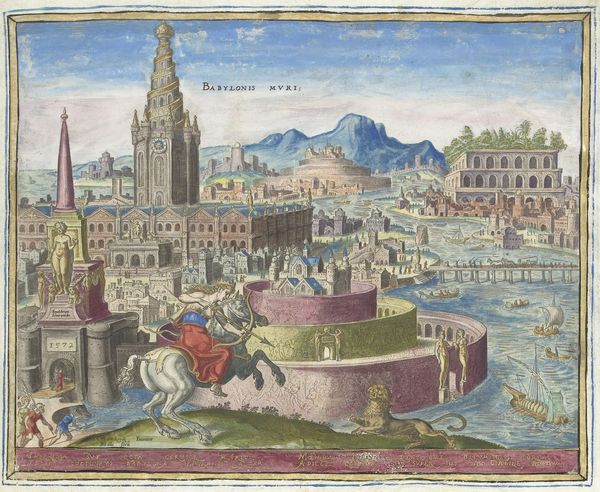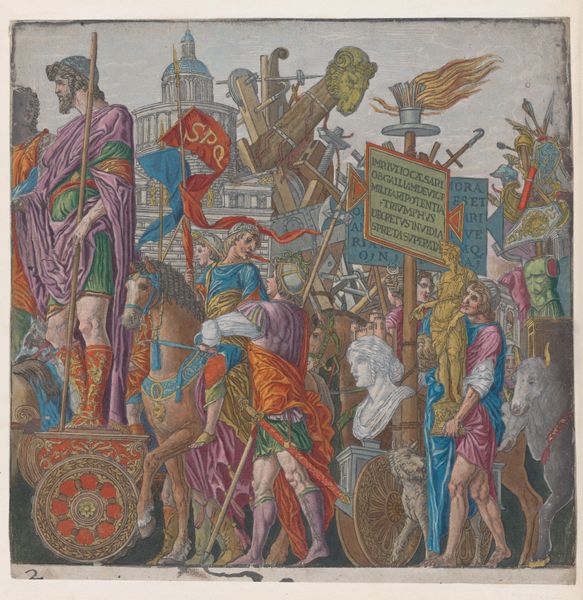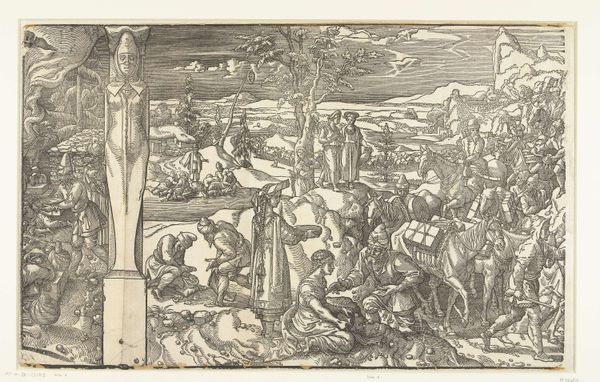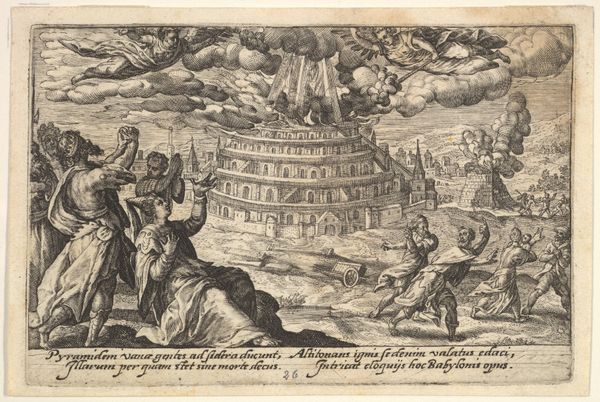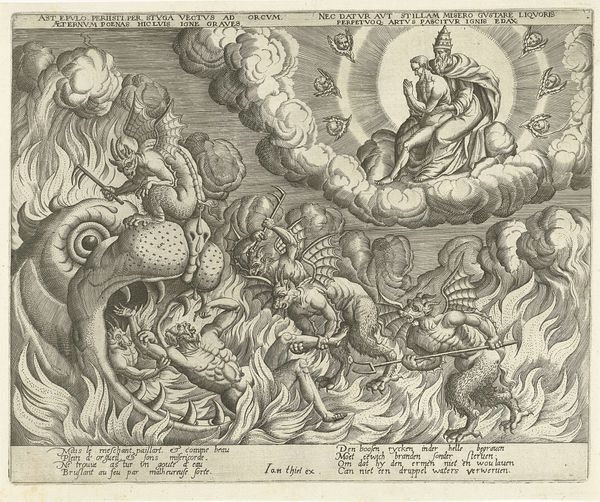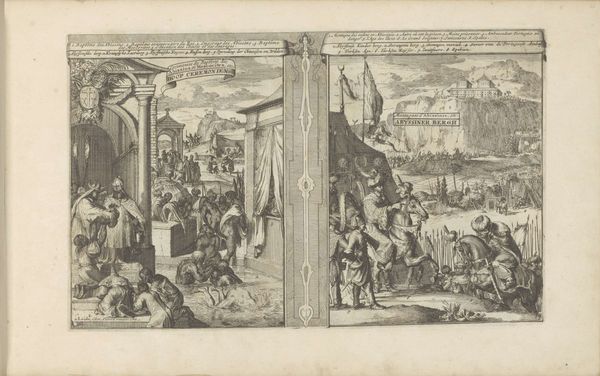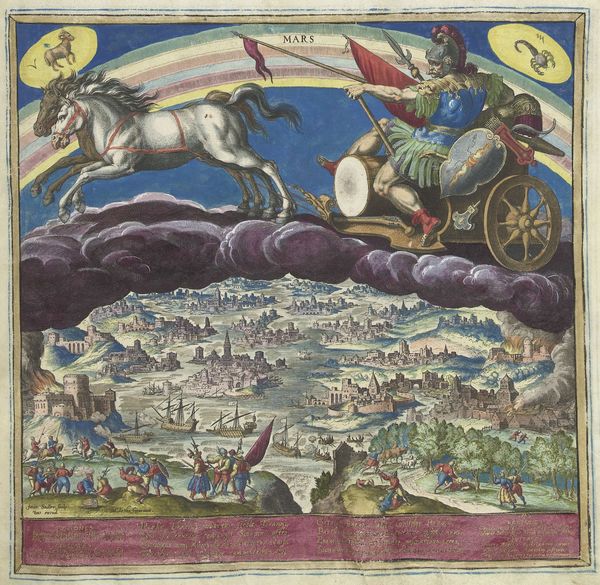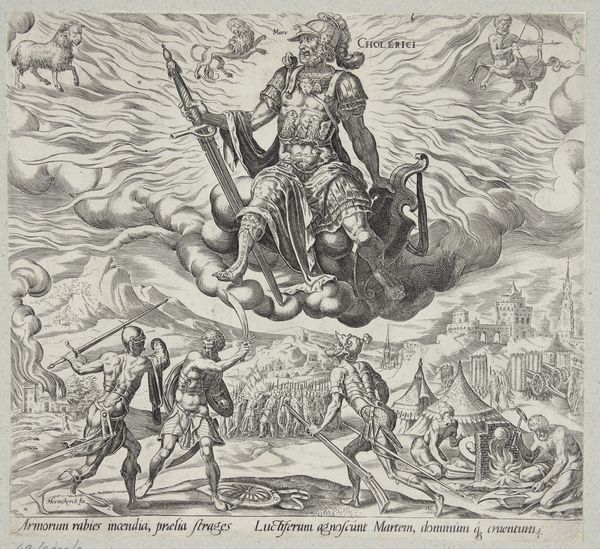
print, engraving
# print
#
landscape
#
11_renaissance
#
coloured pencil
#
cityscape
#
history-painting
#
engraving
Dimensions: height 210 mm, width 255 mm, height 539 mm, width 370 mm
Copyright: Rijks Museum: Open Domain
Art Historian: Editor: Editor: This is “Kolos van Rhodos,” a 1572 print by Philips Galle, here at the Rijksmuseum. The sheer scale of everything is striking; you have this broken statue head in the foreground, people milling about, then a massive figure straddling the harbor in the background. How should we approach an artwork like this? What details should be considered most when understanding the composition and purpose? Art Historian: A thorough visual analysis would serve us well. Note how Galle deploys a high horizon line, compressing the pictorial space and packing the composition with incident. Consider the effect of this choice. Editor: It feels very deliberate, almost staged, in a way. Nothing fades into the background. Every figure, every building demands attention equally. Art Historian: Precisely. The engraving's linear quality is uniform across the pictorial field. The application of color reinforces this, with local hues applied evenly, denying atmospheric perspective. Does the monumentality feel compromised through the stylistic features? Editor: I can see that. Even though the subject itself is colossal, the flat rendering makes it almost feel like looking at a map. Each part is labeled and distinct, instead of creating the illusion of real space and depth. But is the absence of perspective its key attribute? Art Historian: Consider how this graphic quality affects our reading of the image's content. Do the spatial anomalies influence the statue, the harbor? Galle prioritized clarity of detail over spatial realism. What we are observing, student, is less a literal depiction than a constructed presentation— a symbolic ordering of elements that serve another end. What does such analysis make clear? Editor: It highlights that this isn't just about portraying the Colossus; it's about showcasing details, almost diagrammatically, foregoing spatial depth for comprehensive depiction. Thank you for your insight. Art Historian: Indeed. Appreciating such nuances helps unravel its artistic intents, its graphic strengths.
Comments
No comments
Be the first to comment and join the conversation on the ultimate creative platform.
